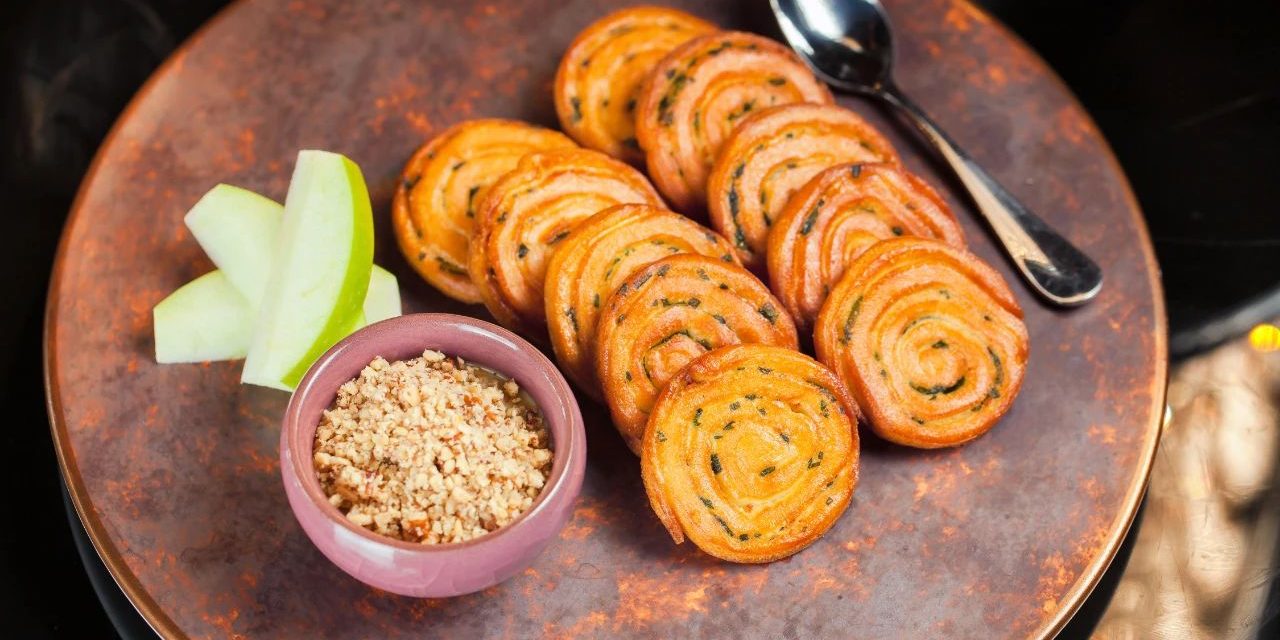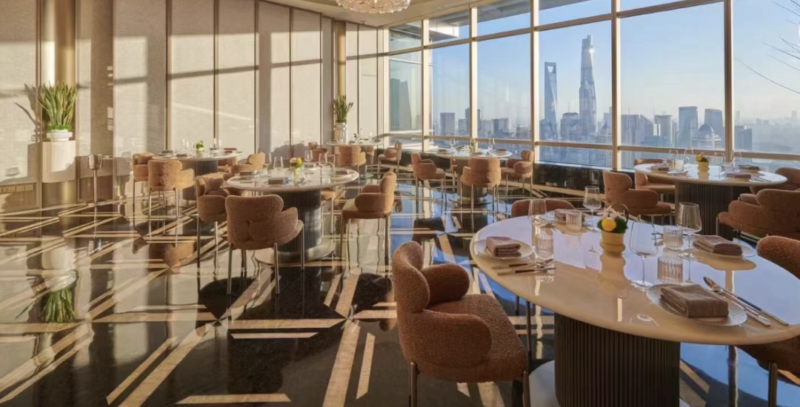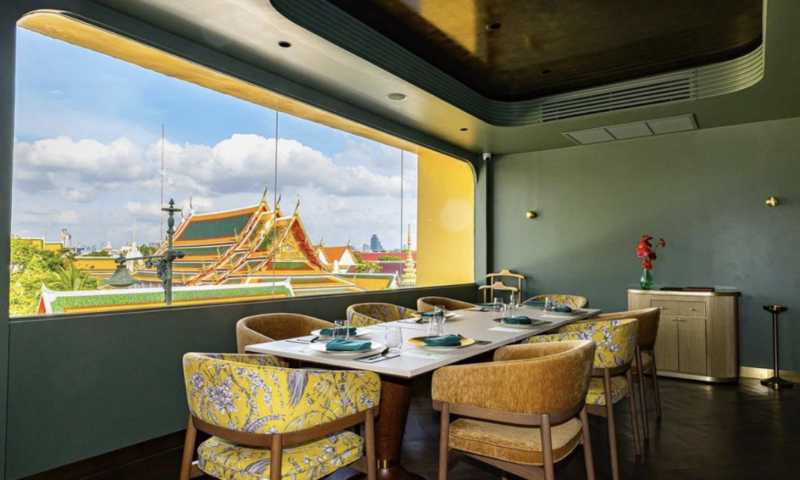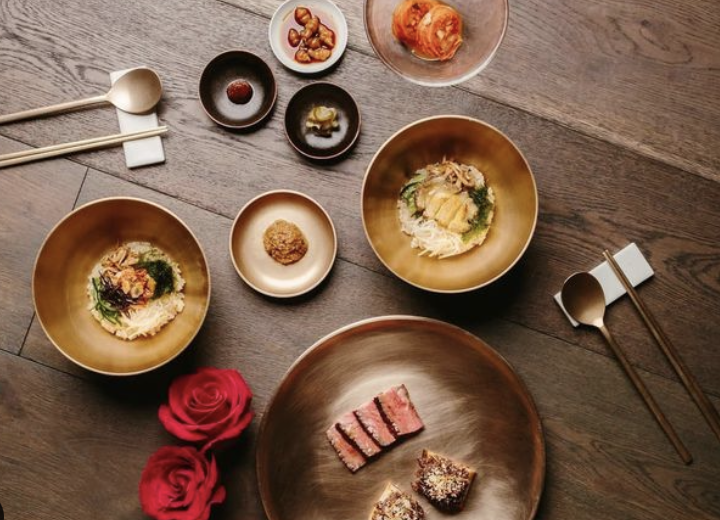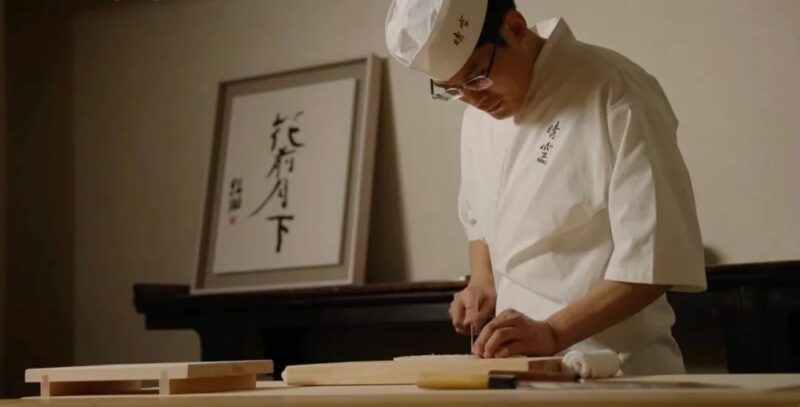The pandemic has continued for a second year, and I was still unable to leave the country. At first it felt like I was trapped, but the search for good food within China has opened another window for me.
I have been learning more about Chinese food culture, marvelling at the vast produce and diverse nature of the country and admiring the efforts of many who have been committed to promoting Chinese fine dining. But as my trips go around, I see a mixed bag. I couldn’t help but wonder if the line between regional cuisines has already blurred.
Recently I have seen some high-end Chinese restaurants lacking originality, where you can easily detect some signature dishes copied from other targeted restaurants such as Xinrongji, Amazing Chinese Cuisine, or Jin Sha at Four Seasons Hotel Hangzhou. Sometimes, you can simply tell by the pictures on the menu.

Hzaelnut Duck Liver and Spring Onion Pancake, is originated with chef Wang Yong. Now it is an essencial of almost every high-end Zhejiang restaurant’s menu. PC: Restaurant

Since Xinrongji served Taizhou street food Braised Sea Anoemons with Vermicelli, this dish turns to a high-end dish.
There is also another kind of restaurants that play up the name of a certain cuisine, thinking that by playing it safe, they will win the hearts of diners. But after you read through the menu, you know this is a claptrap. Wouldn’t this be a waste of the beauty of the differences that China’s vast territory has nurtured?
Cuisine Equals Convention?
The naming of the present eight major cuisines of China first began in the Republic of China. The names “Benbang cuisine”(Shanghai cuisine) and “Hangbang cuisine” (Hangzhou cuisine) are still in use today. The term “genre of cuisine” was initially coined by Yao Yilin, former Minister of Commerce from the 1950s to the 60s, to replace “bang of cuisine” (bang in Chinese means a group, or a category).
The earliest documented record of the eight major cuisines known today appeared in the People’s Daily in 1980. Later on, the debate on cuisines continued but the notion of “eight major cuisines” has become a convention. Traditionally, there were only four major cuisines. In the past, inconvenience in mobility contributed to distinctive cuisine styles among different parts of the country. Nowadays, transportation infrastructure has largely improved and yet each region boasts varied flavours even if they are cooking with similar ingredients and in similar ways. Fresh produce, traditional eating habits, regional specialities… Those are still very attached to certain traditions that are part of their charm.
Terroir Means Forever?
For example, when we drink wine, we are increasingly interested in terroir and flavour differentiation. I was reminded of a documentary I watched a couple of years ago, Mondovino (Italian: World of Wine), which explores the impact of globalisation on various wine-producing regions, and the influence of consultants on making wines that cater to the market.
Rolland is a globetrotting wine making consultant, who is funny and full of confidence. Rolland speaks glowingly of his wines’ “style.” When questioned about personal taste, he quips, “Yeah, it’s called diversity. That’s why there are so many bad wines.” I admire his passion and professionalism, but I can’t subscribe to this “standardisation” argument, which is in a way dismissing uniqueness.
“Wine is a way of showing the relationship between man and nature, a relationship almost religious.” When supporters of localisation in the documentary uttered these words, I found them very true and touching.
Why Do We Need Uniqueness?
China is bestowed by a beautiful range of produce and food treasures. It was during the Song Dynasty that the economic boom led to a flourishing catering industry and a rise of people’s awareness in regional flavours. During the Ming Dynasty, social prosperity led to a growing number of citizens and thus promoting the development of food culture. Ingredients such as tomatoes, pumpkins, maize, chillies and garlic were imported to China during that time. It was not until the mid-Qing Dynasty that the culinary society officially acknowledged the use of chillies and cane sugar as the main seasonings.
As I have seen in Italy, each region has its own culinary specialities due to its narrow, rugged terrain and the use of local produce, except in hotels where international travellers must be well catered. Milan has saffron risotto, veal knee and fried veal chop(cotoletta); Rome has Carbonara, fried zucchini blossoms and artichokes. When Sicilian cuisine comes to Rome, it maintains what makes it special, what makes it different from other regions. The sharing of food has always been part of the human story. If you look closer, you will find our food does not only enter your stomach, it turns into knowledge.
China is a vast and diverse country, and there is no reason the food should converge. However, it is not uncommon to see restaurants using high-end ingredients such as bird’s nest, abalone or shark’s fin just to live up to its price tag. Others have followed suit since Xinrongji used caviar to garnish its stinky tofu dish. Popular dishes are often copied by other restaurants, for example, deep-fried hairtail fish used to be absent from high concept restaurants, but now it’s everywhere since Xinrongji’s made it a hit. It’s worrying to see this trend because it could be an allusive fact that a large proportion of Chinese restaurants seem to have lost their personality.

Xinrongji serves both classical Stinky Tofu and Stinky Tofu with Cavier.
Abuse of Ingredients and Additives
Another impact from homogenisation is the overuse of certain ingredients. Obsession with caviar, for instance, regardless of temperature, quality, or suitability to pair with other food, is simply worse than eating it alone. After all, caviar is not salt, and good caviar is not necessarily salty.
I have seen artificial truffle oil used in abalone dishes. It’s not that it tastes no good, but customers deserve something more than tasty if they are dining at a high-end restaurant. Industrial additives are added to chips and packed snacks, but to use them in dishes that cost thousands of RMB is a disrespect for consumers. Restaurants that keep lamenting that they can’t get a Michelin star may be using too many additives.
Logic of Menu and Self-Identity
Even if it is not so much about distinctions, the designing logic of the menu must be clear. For example, Niko Romito of Bulgari Hotel serves Italian dishes across the whole lineage of its cuisine, with an aim to attract foreign travellers. In China, restaurant Madam Zhu’s Kitchen (Han She) has named its menu “Chinese Cuisine”, serving Jiangsu and Zhejiang local cuisines, Chongqing cuisine, and even roast duck. The owner, Zhu Rong, is a Chongqing native who has operated branches in Jiangsu, Zhejiang and Beijing. Chefs at each branch restaurant are from Beijing or Sichuan, and the dishes served span across these provinces as well. Hao Noodle by Madam’s Zhu Kitchen is also up and running in the US.
 Madam Zhu’s Kitchen- Sliced Pork with Garlic Sauce PC: Ye Shi
Madam Zhu’s Kitchen- Sliced Pork with Garlic Sauce PC: Ye Shi
 Madam Zhu’s Kitchen- Sauteed Organci Cauliflower with Cured Meat. PC: Ye Shi
Madam Zhu’s Kitchen- Sauteed Organci Cauliflower with Cured Meat. PC: Ye Shi
Restaurants get to decide on how much they want their dishes to be local. For example, most Sichuan cuisine restaurants may be serving 80% or 90% Sichuan cuisine, the rest taking into consideration the local palate. Nanxing Garden in Shanghai, on the other hand, adheres to traditional Chengdu Nan Tang dishes, constituting a retro of ancient elegance in Shanghai.
Some say homogeneity is a trend of fusion. As certain dishes are not equipped with rich flavours in themselves, there is a high likelihood that restaurants incorporate trendy dishes to their menus, including Sichuan cuisine of course. After all, it’s difficult to cater to all. The crux of the problem, is still the personality of the restaurant, the logic behind the menu. Cooking as art, can show personal character, and cultural perspectives. Each way of presenting a dish should be able to tell its logic and operation.
The homogeneity of Chinese fine dining could be a lack of confidence or explorational spirit, or lack of money or time, or that our society is too hard on Chinese chefs. We tend to be more tolerant of foreign chefs when it comes to innovation but are much stricter on Chinese chefs. As a result, their hands are tied and are increasingly averse to creation. The possible way out perhaps lies with consumers, who should be more open-minded and supportive to such experimentation.
For fine dining restaurants, I would think it’s wise to develop their menu according to a clear path, a set framework, so that to better cultivate their audience. Trends are temporary, but the loss of identity will have longer term adverse effects.
As a consumer, I may still be on my way to learning Chinese cuisine. Of course there are exceptions, but I do feel that many of those highly established restaurants are not really impressive. The truth is, I do not want to see Chinese fine dining restaurants offer all-the-same mediocre dishes.
Perhaps industry insiders may think that this is not something that should concern diners. But it would be such a pity that those dishes all taste the same – much lauded but insipid, with little trace of their true origins.



